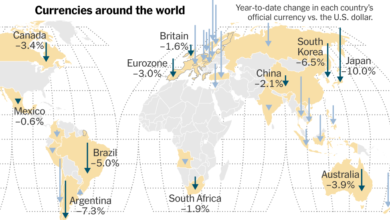Australian dollar at month high buoyed by risk appetite, kiwi firmer
SYDNEY, Aug 19 (Reuters) – The Australian dollar climbed
to a one-month high on Monday, underpinned by buoyant risk
appetite and expectations that interest rates will not be cut
anytime soon, while the kiwi edged nearer a major chart level.
The Aussie rose 0.3% to $0.6682, the strongest
since July 22, having rallied 1.4% last week. It faces
resistance at $0.6688/90 while support is solid at the 200-day
moving average of $0.6603.
The kiwi dollar also rose 0.3% to $0.6071, after
advancing 0.9% last week. It is eyeing major levels at $0.6083
and $0.6088 to shake off the post RBNZ gloom.
The two have been bolstered by a rebound in risk appetite as
strong U.S. retail sales and cooling inflation led investors to
bet the world’s largest economy will dodge a recession and the
Federal Reserve will cut rates in September.
Fed members Mary Daly and Austan Goolsbee were out over the
weekend to flag the possibility of easing in September, with
investors expecting the same from Chair Jerome Powell in Jackson
Hole on Friday.
The calendar at home is light this week – the Reserve Bank
of Australia will release the minutes of its August policy
meeting on Tuesday and New Zealand will publish its trade and
retail sales figures.
“AUD/USD is likely to spend much of the week above our end
quarter forecast of 0.6700 if the RBA minutes are perceived to
be hawkish and/or FOMC Chair Powell is perceived to be dovish,”
said Joseph Capurso, head of international economics at the
Commonwealth Bank of Australia.
The RBA has all but ruled out a rate cut by the year-end,
while the Reserve Bank of New Zealand has flagged two more rate
cuts by the end of the year.
Markets are more sanguine on easing prospects, betting there
was a 70% chance that the RBA can cut by year-end, compared with
fully priced two weeks ago, and the RBNZ could afford to ease
three more times after delivering the first cut in four years
just last week.
The strength in the Aussie also defied a 9% tumble last week
in iron ore prices, a startling drop that led the Treasury to
issue a warning that a faster than assumed fall in the key
commodity price could reduce the budget bottom line by $3
billion over the coming period.
(Reporting by Stella Qiu; Editing by Jacqueline Wong)





